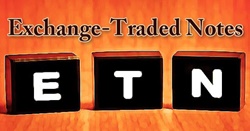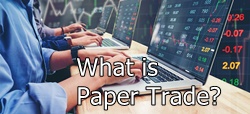
Table of Contents
Exchange Traded Notes
Whether potential or professional and leveraged Exchange Traded Notes (ETNs) to obtain access to different stock indexes' returns can turn beneficial if you are an investor. ETNs' returns are normally tied to an Industry index or plan's success, minus investment fees.

When you purchase an ETN, the underwriting Bank guarantees that you will receive the balance expressed in the index, minus costs, when the ETN matures. As a consequence, unlike an ETF, an ETN holds an Inherent Risk, which is if the underwriting bank's credit is challenged, the investment could lose value, just like a senior debt.
History of Exchange Traded Notes
The first-ever Exchange Traded Note (ETN) was developed and issued in May 2000 in the state of Israel under the product name TALI-25. Its purpose was to track the index representing the 25 leading companies in Israel. Two years later, in March 2002, the United States issued its first-ever ETN. It was soon followed by additional issuers. As of April 2008, there are 56 ETNs from 9 issuers tracking different indexes. Currently, there are 73 ETNs listed to help you with ETN trading.
What is an ETN?
Exchange-Traded Notes is an unsecured debt security issued by an underwriting bank, which offers returns on maturity based on the performance of a stock index. ETNs are similar to Bonds, but they don't pay periodic payments; instead, they face price fluctuations, just like stocks.
They are listed on major exchanges such as the Bombay Stock Exchange and National Stock Exchange, wherein investors trade them on the Basis of demand and supply. They come with a set maturity period, which usually ranges from 10 to 30 years.
Unlike other debt tools, gains or losses on this product depends on the performance of a stock index. Also, Exchange-traded notes holders own the returns that the index generates rather than the asset ownership.
Exchange Traded Notes (ETNs) VS Exchange Traded Funds (ETFs)
When it comes to comparing ETFs and ETNs, know that though both are Exchange-Traded Products (ETPs) and are linked to the Market index they represent, there are some of the major differences between the two as follow:
Instrument Form
ETFs are Mutual Funds, listed and traded on the stock market, which offer interest payments to investors, whereas ETNs are a type of bonds, which are typically issued by financial institutions, which offer a single payout at a time of maturity.
Risk
ETFs are risky as the return depends on market conditions, whereas ETNs are less risky.
Timeframe
ETFs subjects to short term investment, whereas ETNs subjects to long term investment.
Taxation Policy
On ETFs, tax majorly depends on your ownership shares, while on ETNs, investors pay Taxes just once because of lump-sum payments.
Talk to our investment specialist
Features of Exchange Traded Notes
Unsecured Debt
ETNs aren't backed by Collateral, which makes them fall into the category of unsecured debt. When ETNs are issued, issuing party doesn't provide any collateral which may be exchanged to hide the losses (if any) suffered by the investor
Liquidity
The liquidity rate of ETNs is high, which means non-cash assets can be converted into cash assets very quickly. It can be traded on trading days either with the issuing bank or through exchange. Typically, early Redemption is done on a weekly basis, and a redemption fee is charged on it.
Expense Ratio
ETNs often come with an annual expense ratio, i.e. annual maintenance charges levied by the institution to cover fund management and other expenses like annual Operating Cost, management fees, allocation cost, advertising expenses and so on.
Asset Ownership
ETNs does not own any substantial assets; instead, it tracks them. For instance, Gold ETNs just track the gold index but do not buy any gold.
How does an ETN work?
ETN is a debt security, a financial asset representing a loan wherein one party (Financial Institutions) gives a loan to another party (Investors). Investors provide liquid Capital while the institution offers terms to avail the loan like term length, repayment of principal and set return.
Everything except for term length is unknown because it depends on the performance of the asset. Also, debt is unsecured, which means it is not backed by any collateral; thus, the institution stakes everything on the promise of the investor.
When the ETN matures, the financial institution takes away fees, then offers cash to the investor on the basis of the asset’s performance. It is basically calculated as the difference between the purchase and sale prices, minus any fees.
Pros and Cons of Exchange Traded Notes
The core benefits of investing in ETNs are as follow:
Tax Savings
ETNs are long term capital gains that imply investors do not receive any monthly interest or dividends nor any capital gains distribution made in a year. At the end of maturity, they receive lump-sum payment and have to pay long term Capital Gain tax which is relatively lower (Say around 20%) than short term capital gain and payable only once.
Market Access
Generally, specific financial securities like currency, international markets and commodities futures cannot be easily accessible by small investors due to prerequisites like high minimum investment and high commission price. But in the case of ETNs, there are no such prerequisites that make it accessible for every investor.
Accurate Performance Tracking
ETNs does not own any Underlying assets. Hence, it doesn’t require any rebalancing as required in the case of Exchange-traded funds. The ETN represents the index value or Asset Class that it tracks.
Liquidity
ETNs are just like stocks which can be traded in normal trading hours either through securities exchange or through the issuing bank on a weekly basis.
Leverage
Some ETNs have the possibility to offer leverage instead of tracking benchmark’s performance directly. For instance, the DGP ETN offered by the Deutsche bank benchmark is the same as that of gold but offers double leverage, i.e. it reciprocates twice the returns of holding gold. If gold gains 5%, the note gains 10%. Consequently, if gold goes down by 5 %, the note loses 10%. Thus, it is suitable for experienced investors who are willing to take risk in the hope of higher returns.
Cons of Investing in ETNs include:
Credit Risk
ETNs are subjected to both market risk as well as the credit risk of the investment banks issuing them. This is because if the institution collapses, the investor is in a situation where the principal and return is at stake. Credit risk issues should be considered as a relevant Factor while investing in ETNs.
Shortage Liquidity
ETNs are less liquid as they are traded only once per week and also contain holding-period risk, which leaves investors vulnerable to risks.
Complexity
It takes time to understand the manner in which the reference index and the benchmark is calculated, including the fees in either of them for a better investment decision.
Limited Investment Options
As demand for ETNs are lower than other investment products, so it ends up with limited options wherein the cost may differ widely. Also, due to low trading volume, prices can be premium.
Additional Points to Consider Before Investing
Before you start trading, it is necessary to concentrate on exchange-traded notes risk. Thus, here are a few additional points to consider.
- Review your investment objectives and risk tolerance before investing in a particular ETN. Do have a check if your investment needs can be served better by investing in another investment product.
- Have a check on fees associated with ETN, such as fees included in reference index or benchmark, daily investor fees, brokerage or any sort of commissions you may have to pay while trading.
- Whether you are well-versed about how important factors like reference index or benchmark is calculated and it actually works, so as to understand the benefits from particular ETN.
- Understand how the indicative values and redemption values are calculated and what they measure.
- Understand tax implications associated with ETN because tax treatments may vary depending upon the nature of ETNs.
- Seek advice from an investment professional who understands your investment objective as well as your risk tolerance for better results.
How can you buy ETN?
- To invest in ETNs, you need to have a share trading and demat accounts
- Buying an ETN is as easy as buying shares. You can buy or sell on a weekly basis through an account.
Conclusion
ETNs are often linked with ETFs and bonds. Like ETFs, they are traded on stock exchanges and are designed to replicate the underlying value of a particular index or asset. Like bonds, ETNs are issued without collateral and backed by the issuer's promise to repay majorly depending on the creditworthiness of the issuer. ETNs provide access to Illiquid assets while avoiding the administrative headaches that come with actual ownership.
In addition, this structure allows them to perfectly track their underlying index or assets and simplifies holders’ tax considerations. However, they’re a bad choice for those seeking Income from interest payments or dividends.
All efforts have been made to ensure the information provided here is accurate. However, no guarantees are made regarding correctness of data. Please verify with scheme information document before making any investment.












